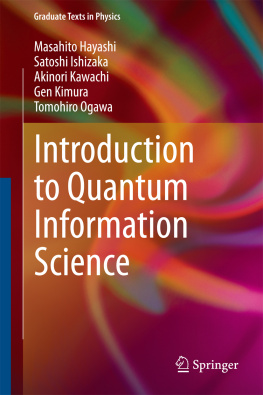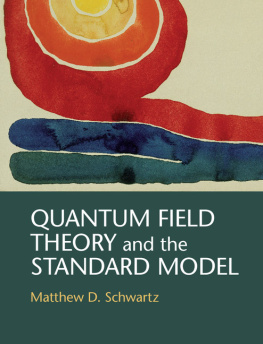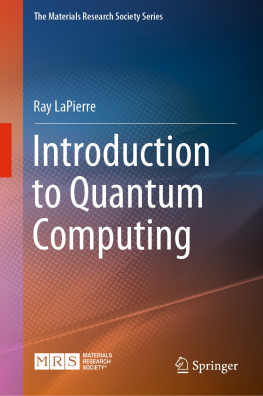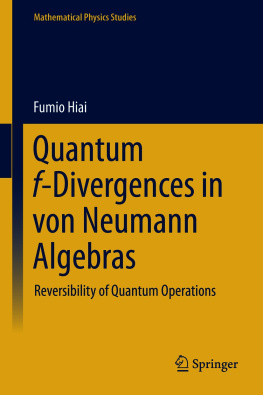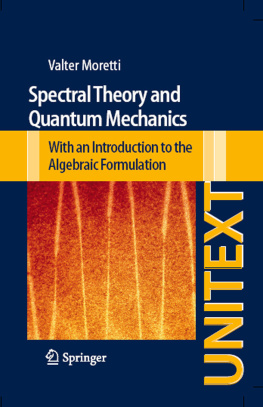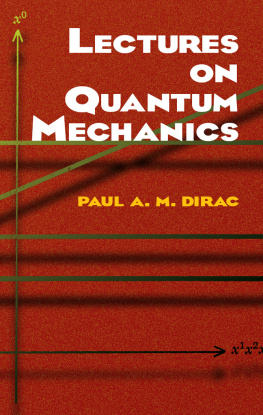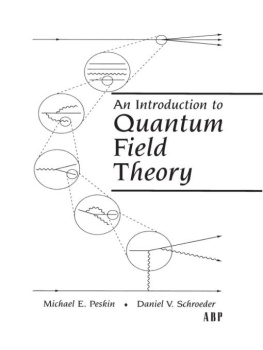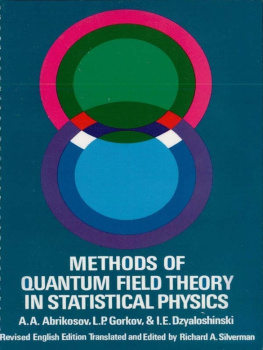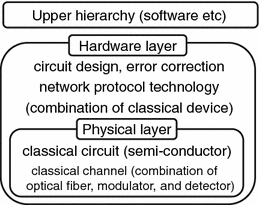1. Invitation to Quantum Information Science
1.1 From Classical Information Science to Quantum Information Science
All of information processing has been realized by the combination of physical devices, e.g., semiconductor devices and optical fibers. The current information-communication and information processing on the computer are designed with the combination of these devices. Electrons in semiconductors and photons of optical fiber ultimately obey not the classical mechanics, but the quantum mechanics. Further, many information processing devices realizing brilliant performance use the quantum effects inside of the devices, e.g., superconducting Josephson device and Esaki diode. However, it is implicitly required as a basic requirement of current information device that the device has no quantum effect in the input and output systems. Hence, the device engineers have been required to design the information device so that no quantum effect directly appears in the input and the output.
What is the quantum effect in the input and the output? In the traditional information sciences, each of the input and the output is required to have a certain fixed value at a moment although it is allowed to change in time and/or behave stochastically. However, when the device is too miniaturized, the device comes to behave as a quantum system. Then, the input and the output do not take fixed values and take quantum superposition states. In the framework of the traditional information sciences, the engineers adopt the strategy to avoid such quantum input and output by limiting the quantum effects inside the device. However, when the miniaturization of the device has been advanced, the above-mentioned strategy does not necessarily realize the optimal performance of the total system. In order to improve the total performance, it is better to admit devices with quantum input and output. Hence, it is required to study information science based on the framework of quantum theory, and such a research area is called Quantum Information Science. On the other hand, the research area that does not take into account the quantum input and output in each device at all is called Classical Information Science.
In fact, thanks to research achievement up to now, it has been clarified that the potential of information science and technology could be expanded very much if we are allowed to use the devices with quantum input and output. It could even say that the traditional strategy that avoids the quantum input and output works against further improvement for the total performance of information system. Indeed, although device engineers are familiar with the quantum effects and even utilize it, information scientists have required so that no quantum effect appears in the input and output due to the convenience. In future, quantum information science will become more popular, and it will be allowed to use devices with quantum input and output, which we expect leads to much progress of information science.
In the following, we call an information processing device a classical device when it does not deal with quantum input and output. Otherwise, it is called a quantum device. Then, the research area with respect to the computation with classical/quantum devices is called quantum computation/classical computation. Similarly, the research area with respect to the communication with classical/quantum devices is called quantum communication/classical communication. In quantum communication/classical communication, a communication channel is treated as quantum channel/classical channel.
Fig. 1.1
Classical treatment of the optical communication
In the following, we explain the relation between the quantum channel and the classical channel by taking for example a communication via an optical fiber (the optical communication). In the case of long-distance communication via an optical fiber, the signal is so weak that it behaves as a quantum particle. However, the traditional information science treats the optical communication in the classical way based on the framework given in Fig. as follows: The hardware engineers take care of the design and implementation of all optical fiber, modulator, and photon detector, in which modulator converts the input information (the input alphabet) to the input photon, and the photon detector converts the output photon to the output information (the output alphabet). It is usual that the output alphabet behaves stochastically and, when the characteristics of the hardware (fiber, modulator and detector) are fixed, the probability distribution is decided depending on the input alphabet only. In this way, in the classical communication, the optical fiber, modulator and photon detector are encapsulated like in a single device, a classical channel, which is characterized by a probability distribution of the output alphabet as a function of the input alphabet. Then, information scientists do not deal with the internal physical structure of the channel, such as a state of a photon, at all. They employ classical mechanical description of the channel, and as a result, they design an encoder and decoder as a classical device that converts between messages and alphabets.
Fig. 1.2
Optical communication as quantum channel
Fig. 1.3
Optical communication as classical-quantum channel
Fig. 1.4
Current hierarchical structure of information processing (Computer and communication)
Fig. 1.5
Future hierarchical structure of information processing (Computer and communication)
Under the framework of quantum information science, we do not encapsulate modulator, optical fiber and detector; instead we regard the encoder and modulator as a single device as shown in Fig.. In this formulation, the photon detector and the classical decoder are encapsulated to the quantum decoder. Similarly, the modulator and the quantum channel are encapsulated to the classical-quantum channel. Even in this framework, we need to take into account the non-commutativity caused by quantum property of the output signal so that quantum treatment is essentially required.

